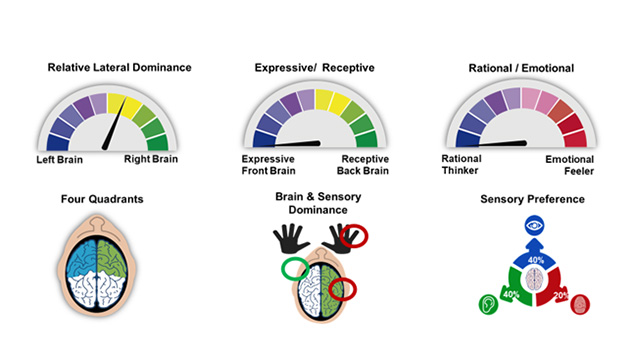In today’s era of disruptive change and new technologies, the skills that our workforce need for tomorrow will look entirely different to those of today. Neuroscience expert Dr André Vermeulen examines how improving our brain performance will help deal with these seismic shifts.
AI and skills
Businesses are going through turbulent times. Rapidly changing technologies, data explosion and the heightened pace of change are set to cause disruption on every level of society and in every industry.
The interplay between fields such as artificial intelligence, virtual reality, the internet of things, 3D printing, neuroscience, mobile networks, and computing will create realities and demand skills that were previously unthinkable.
According to the World Economic Forum, the most in-demand skills by 2020 will be complex problem-solving, critical thinking, creativity, judgment and decision making, and cognitive flexibility – which are all cognitive-based skills.
Radical system-wide innovations can happen in short periods of time. Machines can learn, which puts artificial intelligence in direct competition with people, especially those who are doing routine and repetitive jobs. This will cause widespread disruption to business models and labour markets over coming years.
Agility advantage
The changes now occurring in organisations and markets mean that adaptability, agility, flexibility will become increasingly important to safeguarding people’s future progress and improving their performance.
Brain agility in people, teams and organisations could increasingly become an employer’s competitive advantage – helping HR deliver against all the challenges faced in an era of disruptive change.
Optimising brain performance to its full potential and boosting learning agility, so we can out-think, out-perform, out-create and out-learn others, could be a way to future-proof talent within a business.
The term “agility” refers to “the power of moving quickly and easily” and “the ability to think and draw conclusions quickly”.
People’s agility to adapt, adjust, learn new information quickly and unlearn old behaviour fast, will be crucial to organisations’ survival, progress and competitiveness. They will need to be flexible in moving between ideas and understandings in such a way that they are able to maximise the potential learning value of any given experience.
As organisations become more complex and dynamic, peoples’ ability to learn from experience becomes more important.
As a concept, learning agility has attracted considerable attention from HR professionals and consultants interested in selecting and developing employees’ ability to learn from experience.
Brain fitness
Before people can be agile learners, they need to optimise the drivers that influence their brain performance and overall “brain fitness”– integrating all the neurophysiological attributes that affect their learning agility and learning ability.
This competence is known as neuro-agility. Developing neuro-agility is a prerequisite for the brain to function at optimum level as one integrated whole brain system without any neurological hindrances.
This innovation in learning agility could present a magic solution to developing the super learning powers people need for safeguarding themselves against future job losses to AI.
Neuro-agility focuses on the neurological components of learning, thinking and cognitive processes – components that make people human and determine their competitive advantage.
It also provides fresh insights into how uniquely people learn and why some learn faster, easier and are more flexible than others – shedding light on issues such as learning problems, risk for error and brain fitness that have not sufficiently been addressed before.

Components of neurological design
What are the main drivers?
There are six drivers that optimise the brain’s performance and seven neurophysiological attributes that influence a person’s neurological design (see image). The key to developing and improving learning agility starts with optimising these drivers.
The drivers are:
- brain fitness
- proactive stress-coping skills
- sleep
- movement
- mindset/attitude
- brain food.
The neuro-design dimension of the neuro-agility framework, meanwhile, consists of seven attributes that affect people’s unique learning ability and agility, risk for human error and how they process information to ensure the brain remains “in-flow” and agile for learning.
These are:
- relative lateral dominance
- expressive-receptive preference
- four quadrant neo-cortex preferences
- rational-emotional preference
- brain and sensory dominance combination
- sensory preference
- 11 intelligence preferences
This framework can be used to assess individual and overall organisational learning agility, to identify people’s learning potential and optimise their learning agility, and provides a fresh, research-based neuroscience approach on how to develop talent, improve performance and reduce risk for human error.
It integrates easily with global talent selection, talent development, performance improvement and learning practices and initiatives. Learning agility enables organisations to build a culture of learning and helps future-proof their businesses against disruptive change.
Personalise learning
Relevant and applicable to all employees, learning agility should be adopted throughout an organisation to create a personalised development plan for every employee by measuring and improving.
Sign up to our weekly round-up of HR news and guidance
Receive the Personnel Today Direct e-newsletter every Wednesday
By measuring the drivers that optimise brain performance and the neuro-design components that influence their unique learning potential, HR professionals can assimilate information from these individual assessments to create an overview of the organisation’s brain fitness.
Companies can then set development goals and targets and create a learning agility implementation strategy that integrates with talent selection and management, wellness and learning and development, to secure the skills they need for tomorrow’s changing landscape.
